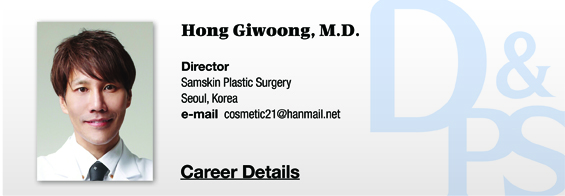
Conditions of an Attractive Face
Going beyond the localized volumization, slimming the outline, smoothing wrinkles, and tightening sagging skin, minimally invasive procedures can be used to improve the overall countenance. For this, we need objective standards and references for an attractive face to which we can aspire. The golden ratio was introduced to describe the most ideal proportions of a physical form. Many artists and scholars saw that a face that appears most beautiful to people has a ratio of 1:1.618 in all parts of the face.
An American oral and maxillofacial surgeon, Steven Marquardt, developed the Marquardt Beauty Mask that can be used for measuring how close one’s face is to the ideal measurements. In this mask, the golden ratio can be found between the distance from the lower lip to the nasal tip and distance from the nasal tip to the glabella, as well as between the horizontal length of the eye opening and the distance from the glabella center to the distal corner of the eye. Marquardt argued that the proportions found in the faces of female celebrities globally recognized as beautiful are similar to those found in the Marquardt Beauty Mask developed for each race.
However, some say that a 3D generation of a face that has the exact proportions of the Marquardt Mask does not appear conventionally beautiful but rather masculine. The golden ratio can be used as one of many references for academic and artistic assessment of a face, however, it is not a good clinical reference for minimally invasive aesthetic procedures. I believe it cannot serves as a realistic and practical standard of beauty for the field of aesthetic medicine.
[Advertisement] MAGNUM(Q-switched Nd:YAG Laser) – Manufacturer: (www.i-dana.com)]
David Perrett, Professor of Psychology, University of St. Andrews in Scotland and Centre for Social Learning & Cognitive Evolution, developed standards of physical attractiveness, which can be divided into absolute and relative standards. The absolute standards are those that are applied to anyone and include facial symmetry, the degree of similarity to the standard ratios, emotions and facial expressions, skin conditions, and severity of wrinkles, etc.
On the other hand, relative standards include familiarity (resemblance to someone familiar to us), difference, and difference in value system, etc. Individual differences in how we see someone as beautiful or not depend on these relative standards of attractiveness.
Let us take a closer look at the absolute standards of attractiveness. Symmetry indicates normal genes and good health and also provides visual stability which increases our level of attraction. Biologically, standard ratios refer to a balance among facial features including the eyes, nose, mouth, hair, eyebrows, and moustache, etc. This indicates health and visually pleasing forms.
We tend to recognize a face that resembles an average of all faces attractive rather than a uniquely different face. The average values are said to reflect the best of all physical characteristics. Regardless of the skin color, which can vary depending on the race, basic skin conditions, extent of wrinkles, and sagging are also included in the absolute standards of attractiveness. Positive emotions as well as cheerful and bright expressions are also part of absolute standards of attractiveness that make us feel more attracted.
-To be continued




















